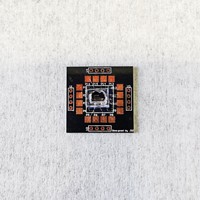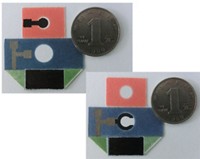Advertisement
Grab your lab coat. Let's get started
Welcome!
Welcome!
Create an account below to get 6 C&EN articles per month, receive newsletters and more - all free.
It seems this is your first time logging in online. Please enter the following information to continue.
As an ACS member you automatically get access to this site. All we need is few more details to create your reading experience.
Not you? Sign in with a different account.
Not you? Sign in with a different account.
ERROR 1
ERROR 1
ERROR 2
ERROR 2
ERROR 2
ERROR 2
ERROR 2
Password and Confirm password must match.
If you have an ACS member number, please enter it here so we can link this account to your membership. (optional)
ERROR 2
ACS values your privacy. By submitting your information, you are gaining access to C&EN and subscribing to our weekly newsletter. We use the information you provide to make your reading experience better, and we will never sell your data to third party members.
Analytical Chemistry
DNA Trio Assembles To Detect Proteins In New Assay
Medical Diagnostics: An easy-to-run assay senses picomolar levels of proteins in a single tube
by Laura Cassiday
July 1, 2014

A new assay easily detects picomolar concentrations of specific proteins in a single step without the need for complex reagent mixtures (Anal. Chem. 2014, DOI: 10.1021/ac5011316). All researchers need is a trio of DNA strands and an enzyme. The method could simplify diagnostic testing, particularly in regions with limited resources, the study authors say.
Currently, the gold standard for diagnostic protein detection is the enzyme-linked immunosorbent assay, or ELISA. However, this method requires several reagents and steps. Hongquan Zhang, a bioanalytical chemist at the University of Alberta, developed the new, one-step process to make protein detection easier.
The assay adds a simple readout to a technique Zhang developed previously, called binding-induced DNA assembly, or BINDA (Anal. Chem. 2012, DOI: 10.1021/ac203207g). The researchers start with two different molecules, such as antibodies, that bind the protein of interest. They then attach these molecules to two separate strands of DNA with stretches of a complementary sequence. When the molecules bind their target protein, the two DNA strands come into close contact, allowing the complementary sequences to hybridize.
Through this hybridization, the strands assemble to reveal a DNA sequence complementary to that of a third DNA strand. This third piece of DNA, which contains a fluorophore, then binds to the complex and generates a fluorescent signal. Over time, this signal gets amplified because a DNA-snipping enzyme cuts the third strand and releases it from the DNA complex, allowing other third strands to move in.
Although the method seems complicated, it’s really quite simple to operate, Zhang says. Researchers mix all reagents in a single tube at 37 °C, wait two hours, and then read the signal on a fluorescence plate reader. Zhang and his colleagues used the method to detect picomolar concentrations of two proteins: streptavidin and prostate-specific antigen in diluted human serum.
“The sensitivity of the method is comparable to ELISA, but the operation is much easier,” Zhang says.




Join the conversation
Contact the reporter
Submit a Letter to the Editor for publication
Engage with us on Twitter